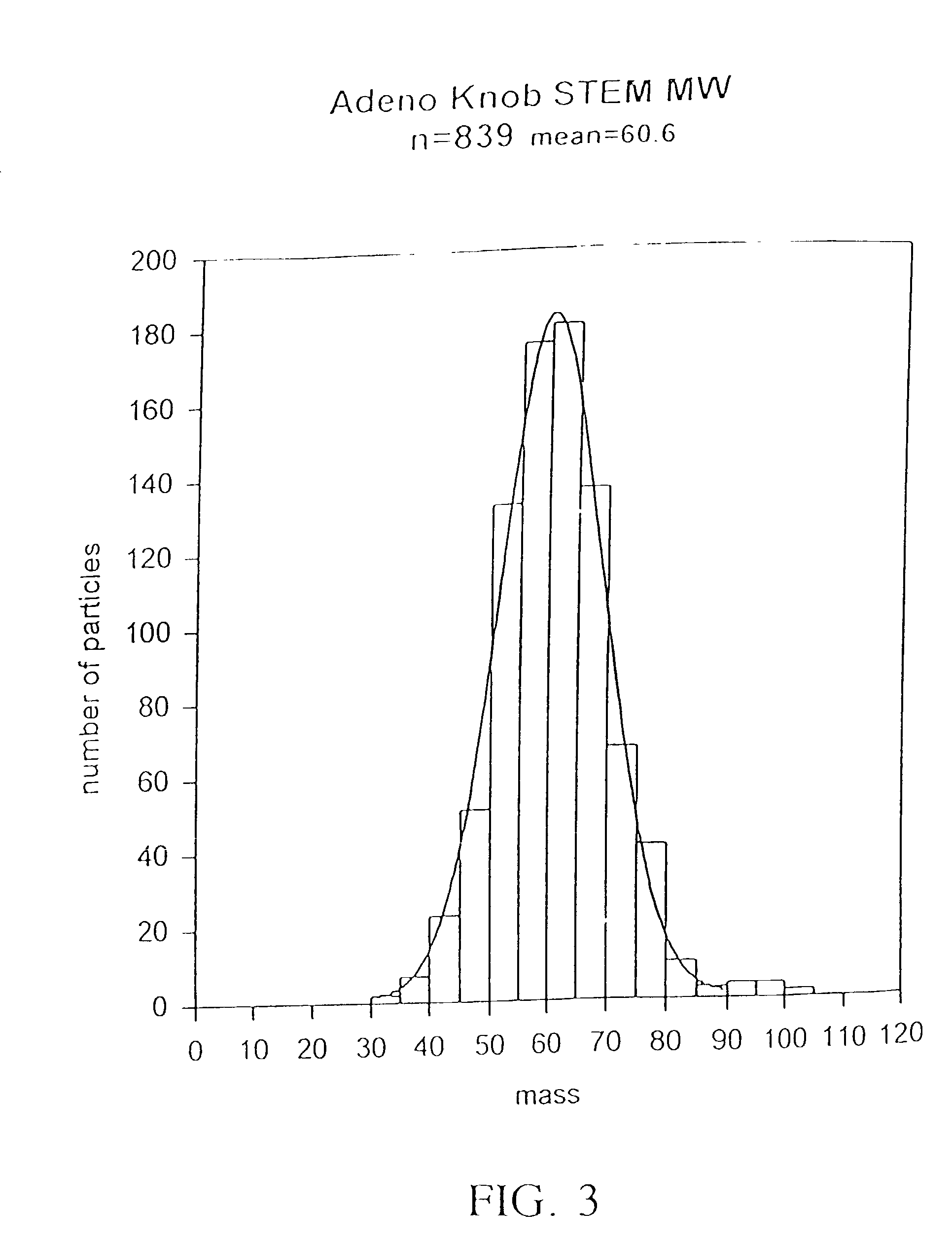Structure of adenovirus bound to cellular receptor car
a technology of adenovirus and car, which is applied in the direction of viruses/bacteriophages, peptides, genetic material ingredients, etc., can solve the problems of poor efficiency of adenoviral gene transfer to human lung tissue, and achieve the effect of weakened binding affinity for car-d1, and altered adenovirus-car binding properties
- Summary
- Abstract
- Description
- Claims
- Application Information
AI Technical Summary
Benefits of technology
Problems solved by technology
Method used
Image
Examples
Embodiment Construction
[0013]The present invention is based, in one aspect, on the discovery that the adenovirus-binding activity of human CAR is localized in the amino-terminal IgV-related domain. As detailed in the Exemplification section, the isolated amino-terminal IgV-related domain of CAR (referred to herein as D1 or CAR-D1) and the entire extracellular region (referred to herein as D1 / D2 or CAR-D1 / D2) both have the ability to form complexes with Ad12 knob. Furthermore, the presence of free D1 in soluble form, inhibits Ad2 virus infection of HeLa cells and the presence of free Ad12 fiber knob also inhibits Ad2 virus infection of HeLa cells. Collectively, these observations indicate that D1 is the component of CAR responsible for the adenovirus-binding activity for adenoviruses of subgroups A and C.
[0014]One embodiment of the present invention is an isolated polypeptide that binds adenovirus comprising an amino acid sequence corresponding to the D1 domain of the human CAR protein. The preferred embod...
PUM
| Property | Measurement | Unit |
|---|---|---|
| flow rate | aaaaa | aaaaa |
| molecular weight | aaaaa | aaaaa |
| temperatures | aaaaa | aaaaa |
Abstract
Description
Claims
Application Information
 Login to View More
Login to View More - R&D
- Intellectual Property
- Life Sciences
- Materials
- Tech Scout
- Unparalleled Data Quality
- Higher Quality Content
- 60% Fewer Hallucinations
Browse by: Latest US Patents, China's latest patents, Technical Efficacy Thesaurus, Application Domain, Technology Topic, Popular Technical Reports.
© 2025 PatSnap. All rights reserved.Legal|Privacy policy|Modern Slavery Act Transparency Statement|Sitemap|About US| Contact US: help@patsnap.com



